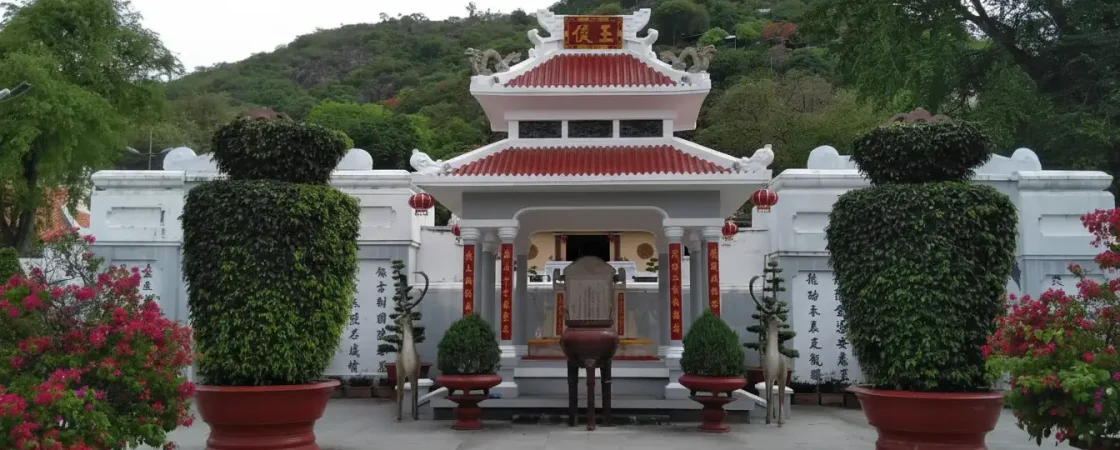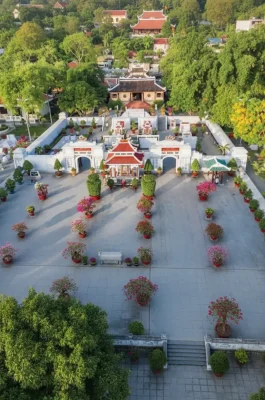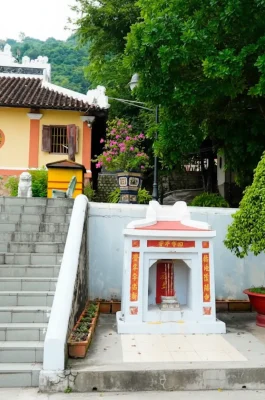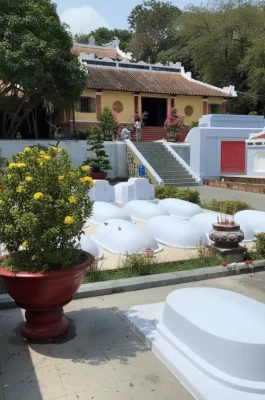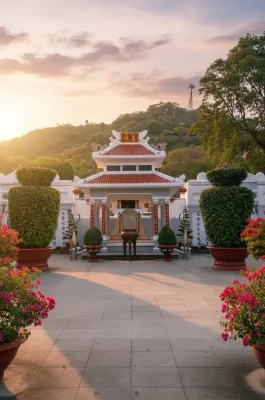Thoai Ngoc Hau Mausoleum: Honoring the Founder of the Mekong Delta
Thoai Ngoc Hau Mausoleum, also known locally as Sơn Lăng (Mountain Tomb), is located majestically at the foot of Sam Mountain (Núi Sam) in Châu Đốc City, An Giang. This mausoleum serves as the final resting place for Nguyễn Văn Thoại (1761–1829), who received the title Thoại Ngọc Hầu. He was a highly respected military general and official under the Nguyễn Dynasty, and his contributions were pivotal in reclaiming and developing the southern region of Vietnam.
Historical Significance: The Man Who Shaped the Land
Thoai Ngoc Hau is famed for commissioning two massive engineering projects in the early 19th century that fundamentally changed the Mekong Delta region:
Vĩnh Tế Canal: He supervised the digging of the Vĩnh Tế Canal, a crucial waterway that stretches from Châu Đốc to the Gulf of Thailand. This channel enhanced trade, defense, and irrigation in the region, acting as a foundational element of the area’s prosperity.
Thoại Hà Canal: He also oversaw the construction of the Thoại Hà Canal, which helped expand cultivated land in An Giang. The local people affectionately named a mountain and river after him to honor his contributions.
The mausoleum stands as a lasting symbol of the local people’s gratitude for his immense public service and efforts to secure the borderlands.
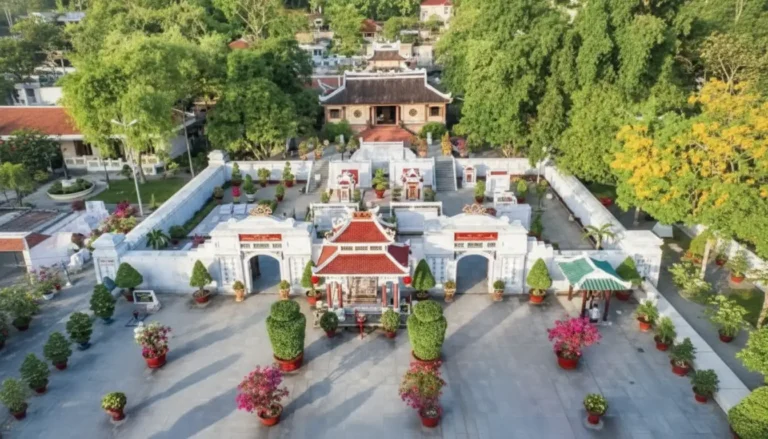
Architecture and Layout: A Nguyen Dynasty Relic
The mausoleum is considered one of the most intact and typical architectural works remaining from the Nguyễn Dynasty in the South. It faces a large field, with Sam Mountain providing a protective backdrop, creating a harmonious and imposing setting.
The Entrance: Visitors approach the site by climbing nine sturdy laterite steps. The main entrance features thick, semi-circular gates.
The Tombs: The central complex contains three main tombs: the middle one belongs to Thoai Ngoc Hau, with the tombs of his principal wife, Châu Thị Tế, and his second wife, Trương Thị Miệt, flanking him. Notably, many smaller, anonymous tombs surrounding the main area hold the remains of his courtiers, relatives, and militiamen who died during the Vĩnh Tế canal construction. This layout emphasizes his deep connection and responsibility to his people.
The Temple: A majestic temple is built on higher ground behind the tombs. Inside the temple, you find a solemn bust of Thoai Ngoc Hau. The walls and columns display ancient horizontal lacquered boards and parallel sentences that praise his merit and historical achievements.

Visitor Information and Cultural Context
Location: The mausoleum is conveniently located right next to the famous Ba Chua Xu Temple, making it an easy addition to any pilgrimage or historical tour of Sam Mountain.
Address: M3JH+QJP, P. Núi Sam, Châu Đốc, An Giang, Vietnam.
Entrance Fee: Visiting the mausoleum is typically free.
Annual Ritual: The Vía Bà Chúa Xứ Festival, which is held nearby, includes a solemn ritual that involves a procession to Thoai Ngoc Hau’s Tomb to honor his merit, demonstrating the enduring link between this historical figure and the region’s spiritual life.
Experience: A visit offers a quiet moment to reflect on the history of Southern Vietnam’s development and appreciate a rare example of early Nguyễn Dynasty architecture.
